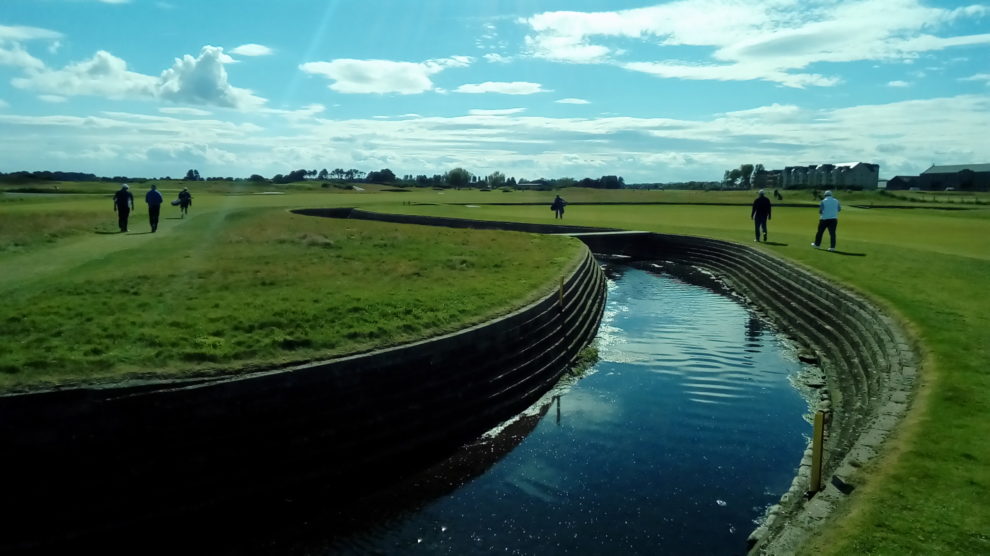Most American golf fans only watch links golf once per year, and that's when the British Open Championship comes around in July. Yankee golf fans certainly know about water hazards on a golf course, ranging from streams to ponds to lakes to the occasional ocean. But the one thing we don't have here in the United States on our golf courses in a burn.
Well, we do, but we don't call it a burn. They do in England and Scotland, as well throughout the British Isles and Ireland. So, what is a burn?
Technically speaking, a burn is different from a stream or a river, but it's a similar concept. On the links land connecting the sea to the mainland, wind moved sand and grasses over time, allowing water to flow in little streams to and from the sea. As golf courses were developed and became a regular place of play in the 19th century, many of these small rivers were made permanent with stone walls to keep them in place and make them a constant part of the golf course. In effect, a burn is the conversion of a temporary stream to a permanent one. Courses were built around burns for a challenge, back when it was difficult to move earth.
Often times, a burn is often camouflaged as part of the course. The occasional walling off of the burn typically does that, with the water flowing well below the top height of the burn. Compare that to many water hazards in the United States, where the water comes up to the top of the stream and nearly meets the land surrounding it. The deceptive nature of burns can make them come up as a surprise to players who aren't used to seeing a course. Burns typically snake around a golf course and are a factor on several holes, if not several times on the same hole.
The burn is typically used as a defense on approach shots, though some links courses use them brilliantly as a dividing point in the fairway, creating a specific landing area for tee shots. Carnoustie does this perhaps best in the British Open rotation, with the Barry Burn coming into play on a handful of holes.

